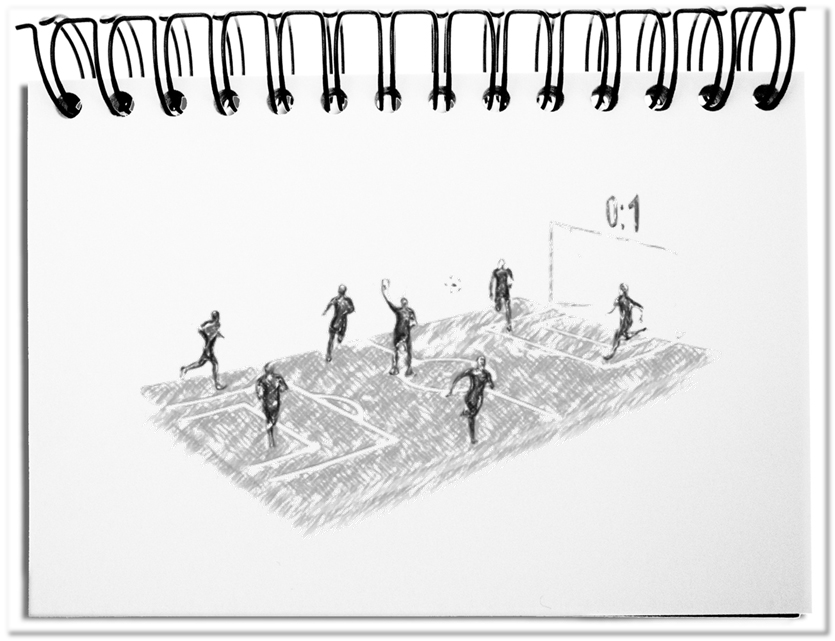All team sports have the playing field, the types of player, and the rules of the game in common. From the beginnings of football in China, 4000 years ago, rules are not passed on. However, it is believed that it was initially a training program for soldiers. From less than 1800 years ago, rules are known, which had to get control on the physical powers of the players’. Then, for over a thousand years, the game was forgotten in Europe. The restart in 1848 began immediately with the establishment of football rules, which are refined until today. They include a specific culture, the distribution of the playing field, general parameters and possibilities for sanctioning, as well as clear roles. The actual game is developing within this framework in thrilling variants – the same way as the business in the framework of the governance. This text also expands the purpose of the Governance!
The governance provides the following elements: the principles, the business alignment, various definitions and above all defined roles.
- Principles
In soccer the fair play, the compliance, as well as the aggressive and defensive strategies are common principles. In business they define the culture and the self-understanding of a company. They should answer the following questions: Where are we within 10 years? What are our characteristics? Where are we from? What is our history? Why do we exist? What’s our purpose? What makes us successful? What’s our USP? How do we see ourselves? What are our values and beliefs? What are the attributes of our products? The principles behave like cement that stabilizes the mortar in a way that it holds together. - Business alignment
The teams agree on which half of the playing field is assigned to which team. The objective is to score a goal. Also in business the areas come to an agreement – endorsed by the leading team. The following aspects are important: What is the purpose of the unit? How do we exchange our ideas? How do we cooperate? Which roles (TAR) are available? How to find an agreement? The business alignment works like the mixture ratio of sand, lime and water that depend on the usage. - Glossary
The different sports have comprehensive, special jargons, which one has to learn. The business also uses a special vocabulary. The glossary determines this terminology of the company. Therefore the following questions are important: Which terms are crucial for the cooperation? How do we get clear formulations? How do we guarantee completeness? When is a term described correctly? Also mortar consists of a set of terminology that describes the variants (e.g. masonry mortar, plaster mortar) as well as the components (e.g. sand, lime). - Critical success factors (CSF)
The game is determined by factors that the coach wants to improve through intensive preparation, e.g. passes, goal accomplishment and other standard situations. In business the CSFs are the key figures of the success that are crucial for surviving and which improve the competitive ability. In the following areas the threatening aspects can be found: within the processes, in the market, at the customer side, within the applied technologies, within the information, within leadership etc. You also have to take care of certain CSFs, when you use mortar, e.g. the temperature or the mixing ratio. - Metrics
In team competitions the scored points, i.e. goals or baskets, are the ultimate measure. The more comprehensive metrics in business provide generic metrics. Based on a Balanced Scorecard the growth, customer and financial perspectives as well the internal perspectives such as status of the life cycle, the processes, the quality and the governance are described. The relevant metrics are for example the individual mixings of the mortar. - Guidelines
The rules of the game in football are globally valid and evolve continuously, as one can see in the video replay referee. The guidelines in the company are more extensive, cover all fundamental regulations and are reachable to all members of the unit. The older the enterprises, the more rules have been accumulated concerning organization, personnel, report system, laws, values, and the management of IT, risks and changes. The same way various use cases determine the composition of the mortar. - Roles
Striker, goalkeeper, referee and linesman are an extract of the roles in soccer. In business, the roles provide a generic approach to individual job descriptions. They consist of tasks, authority and responsibility. Tasks are well defined, if the functions, goals, processes and available resources are clear. The authority regulates the powers concerning decision, control, information etc. The responsibility determines the qualities that should be fulfilled, like completeness, correctness or timeliness. There are also various roles when you use mortar: brick layer, master of concrete, foreman, etc.
Bottom line: Governance, with its principles, business alignment, general determinations and roles, provides a simple basis for the interaction of the different areas. Game rules, as in football, provide similar definitions like e.g. the marked out playing field and the roles of the different participants. For that reason, the game rule is an ideal metaphor for the components of governance.

